Background
I'm interested in simplifying polygons with use of the gSimplify function available through the rgeos package.
Reproducible example
A reproducible example can be generated with use of the code below:
# Data sourcing -----------------------------------------------------------
# Download an read US state shapefiles
tmp_shps <- tempfile()
tmp_dir <- tempdir()
download.file(
"http://www2.census.gov/geo/tiger/GENZ2014/shp/cb_2014_us_state_20m.zip",
tmp_shps
)
unzip(tmp_shps, exdir = tmp_dir)
# Libs
require(rgdal)
require(rgeos)
# Read
us_shps <- readOGR(dsn = tmp_dir, layer = "cb_2014_us_state_20m")
# Simplified --------------------------------------------------------------
# Simplifiy
us_shps_smpl <- gSimplify(spgeom = us_shps,
tol = 200,
topologyPreserve = TRUE)
Preview
par(mfrow = c(2,1))
plot(us_shps_smpl, main = "Simplified")
plot(us_shps, main = "Original")
Problem
In addittion to simplifying polygons the gSimplify function changed classes of the resulting object:
>> class(us_shps)
[1] "SpatialPolygonsDataFrame"
attr(,"package")
[1] "sp"
>> class(us_shps_smpl)
[1] "SpatialPolygons"
attr(,"package")
[1] "sp"
>> names(us_shps)
[1] "STATEFP" "STATENS" "AFFGEOID" "GEOID" "STUSPS" "NAME" "LSAD" "ALAND" "AWATER"
>> names(us_shps_smpl)
[1] "0" "1" "2" "3" "4" "5" "6" "7" "8" "9" "10" "11" "12" "13" "14" "15" "16" "17" "18" "19"
[21] "20" "21" "22" "23" "24" "25" "26" "27" "28" "29" "30" "31" "32" "33" "34" "35" "36" "37" "38" "39"
[41] "40" "41" "42" "43" "44" "45" "46" "47" "48" "49" "50" "51"
Questions
How can I safely reattached the data that was initially available in the original object and transform the resulting
SpatialPolygonsobject to aSpatialPolygonsDataFrameI reckon that one approach would simply involve attaching data frame;but this depends on the order of elements not changing. Are there any other better approaches (ideally preserving initial object class)?
